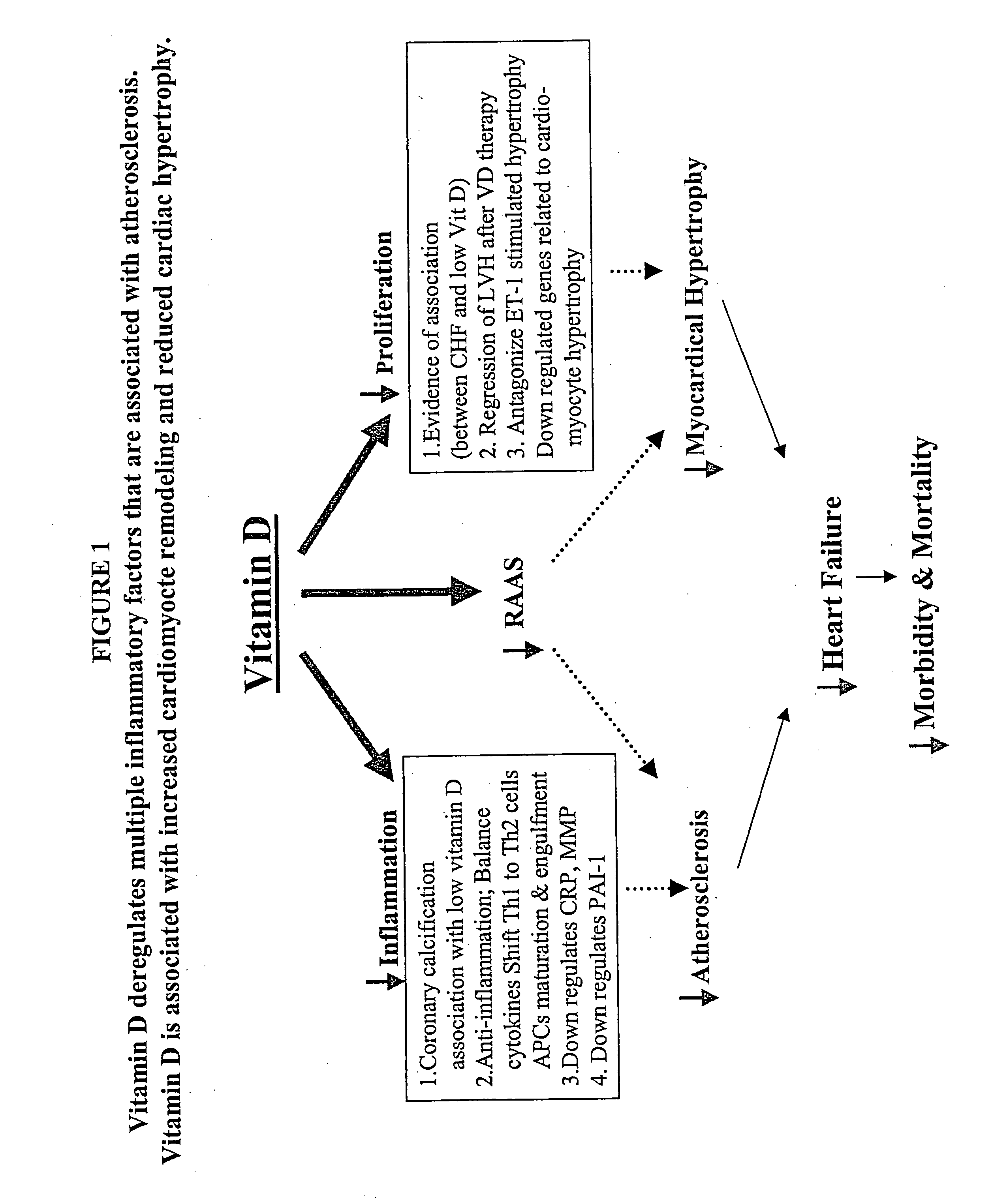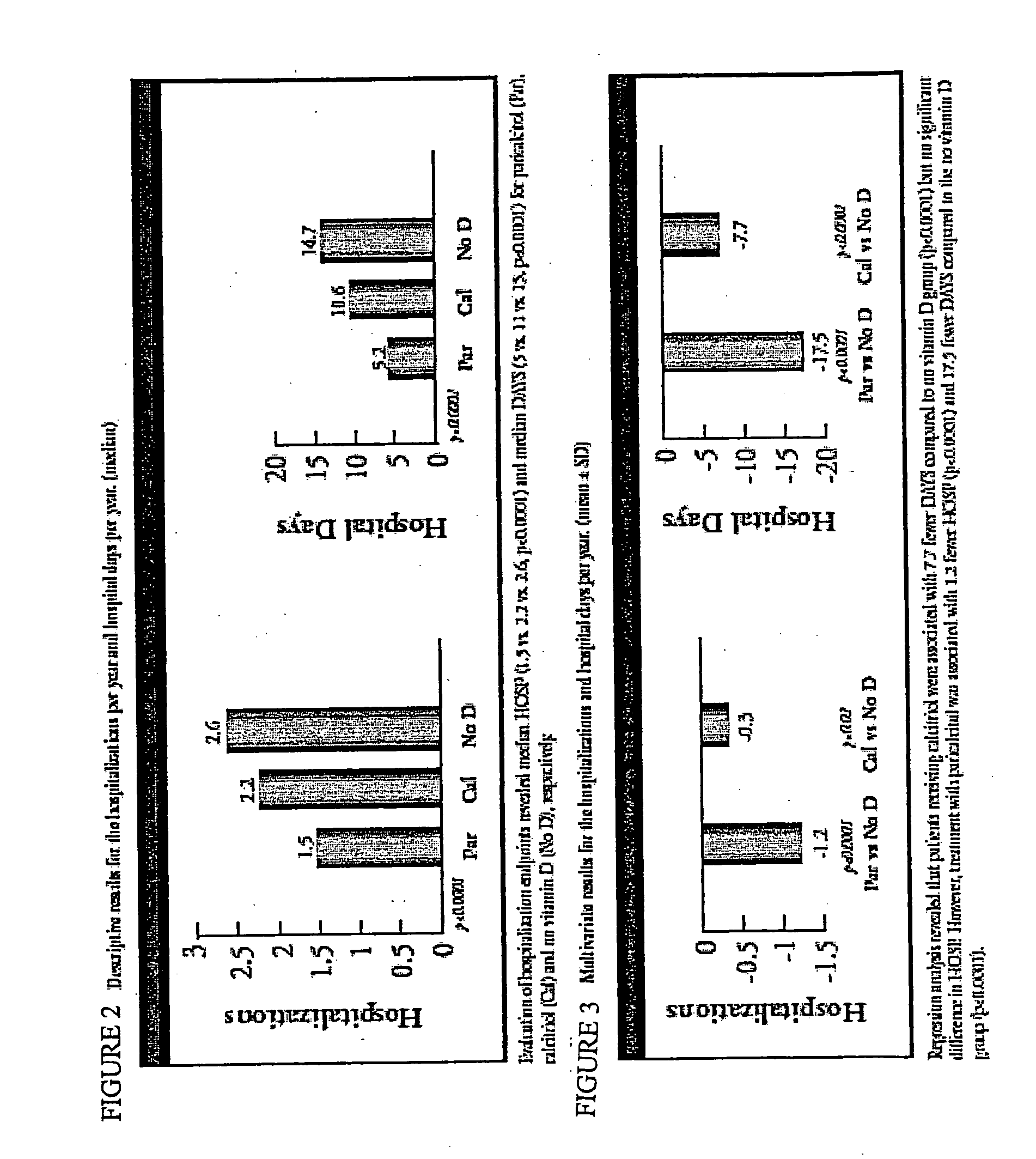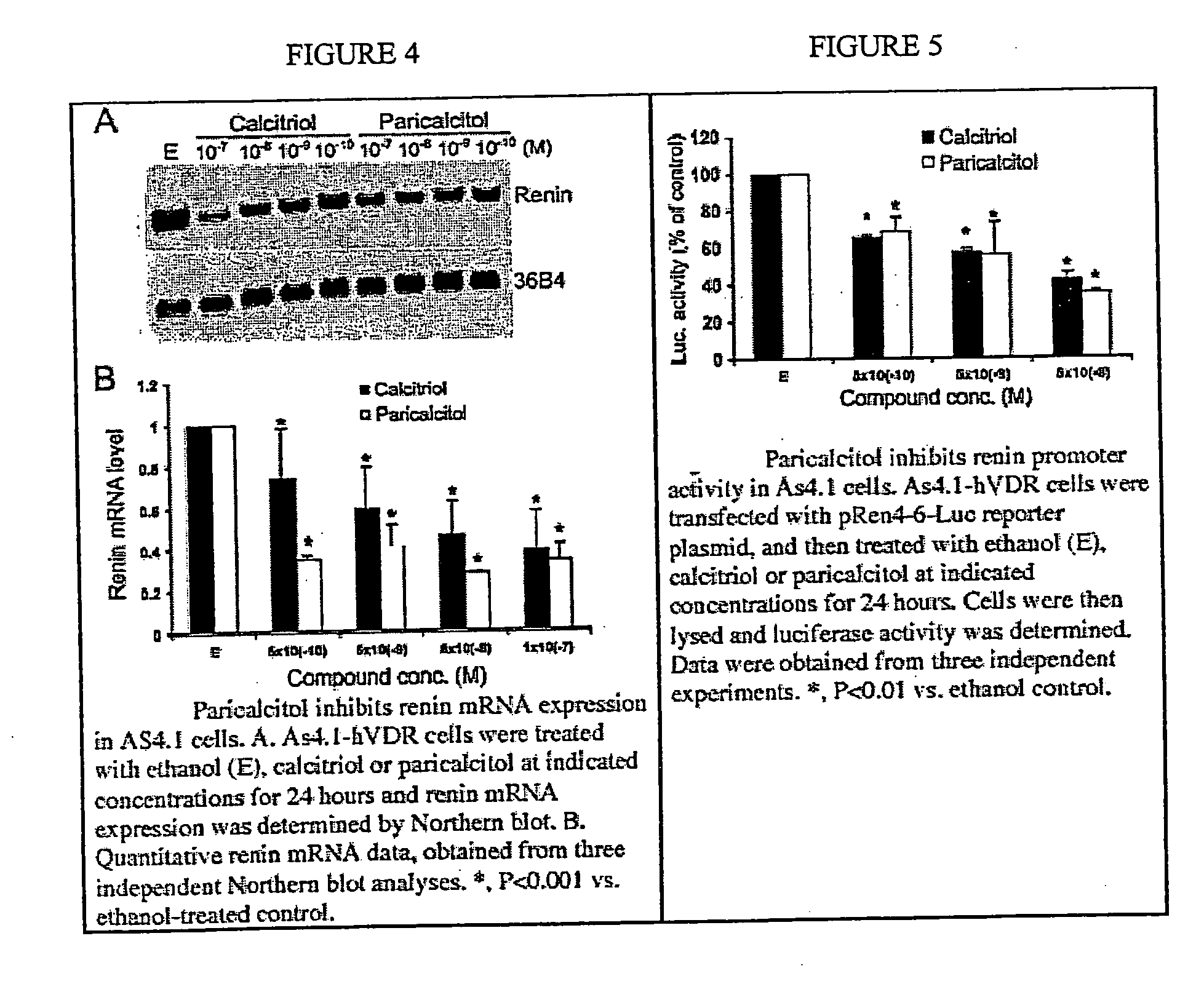Use of Vitamin Ds or Vitamin D analogs to treat cardiovascular disease
a technology of vitamin d and analogs, applied in the field of vitamin d receptor activator, can solve the problems of limited utility of existing medications, low vitamin d levels, and insufficient treatment of cvd
- Summary
- Abstract
- Description
- Claims
- Application Information
AI Technical Summary
Benefits of technology
Problems solved by technology
Method used
Image
Examples
example 1
Decreased Morbidity and Mortality Associated with Vitamin D Therapy
[0040] The leading cause of mortality and morbidity in patients receiving chronic hemodialysis related to cardiovascular disease. Prevalence of CVD can be found in at least 75% of patients who initiate hemodialysis therapy.
[0041] An observational cohort study examining hemodialysis patients who started vitamin D therapy with paricalcitol experienced fewer hospitalizations related to cardiovascular events and non-infectious inflammations, compared with patients treated with calcitriol (Paricalcitol-treated patients experience improved hospitalization outcomes compared with calcitriol-treated patients in real-world clinical settings, D. G. Dobrez, et al. Nephrol Dialysis Transplant 2004 19:1174).
[0042] This study was expanded to include patients who received no Vitamin D receptor activator treatment. [“Improved hospitalization outcomes in hemodialysis patients treated with paricalcitol.” J. Melnick, et al., abstract...
example 2
Activity of Paricalcitol to Suppress Renin Expression
[0045] Recently, it has been found that 1,25-dihydroxyvitamin D functions as a negative regulator of renin biosynthesis in vitro and in in vivo studies. Calcitriol is able to inhibit renin gene expression, which provides a molecular basis to explore the use of vitamin D and vitamin D analogs as new renin inhibitor to regulate rennin-angiotensin-aldosterone system (RAAS).
[0046] Using an in vitro cell culture system, the activity of paricalcitol to suppress renin gene expression was examined using previously published techniques (1,25-Dihydroxyvitamin D3 is a negative endocrine regulator of the renin-angiotensin system, J. Clin. Invest., July 2002). As shown in FIG. 4, by Northern blot analysis, paricalcitol treatment of As4.1-hVDR cells does-dependently inhibits renin mRNA expression. In fact, its renin-inhibiting activity appears a bit more potent than calcitriol (FIGS. 4A and B). This inhibitory effect is confirmed by renin pro...
example 3
Effect of VDR Activators on PAI-1
[0048] The effect of paricalcitol and calcitriol on PAI-1 in primary culture of human coronary artery smooth muscle cells was investigated. (See FIG. 6.) PAI-1 (plasminogen activator inhibitor type-1) is one of the risk markers for coronary heart disease, and is enhanced in atherosclerotic plague and colocalized with macrophages.
[0049] Human coronary artery smooth muscle cells were incubated with paricalcitol or calcitriol at the indicated concentration for 24 hr at 37° C. Samples were solubilized in SDS-PAGE sample buffer, and the protein content in each sample was determined by the Bio-Rad dye-binding protein assay. Samples were resolved by SDS-PAGE using a 4-12% gel, and proteins were electrophoretically transferred to PVDF membrane for Western blotting. The membrane was blotted for 1 h at 25° C. with 5% nonfat dry milk in PBS-T and then incubated with a mouse anti-PAI-1 monoclonal antibody in PBS-T overnight at 4° C. The membrane was washed wit...
PUM
| Property | Measurement | Unit |
|---|---|---|
| systolic blood pressure | aaaaa | aaaaa |
| Northern blot | aaaaa | aaaaa |
| Northern blot analysis | aaaaa | aaaaa |
Abstract
Description
Claims
Application Information
 Login to View More
Login to View More - R&D
- Intellectual Property
- Life Sciences
- Materials
- Tech Scout
- Unparalleled Data Quality
- Higher Quality Content
- 60% Fewer Hallucinations
Browse by: Latest US Patents, China's latest patents, Technical Efficacy Thesaurus, Application Domain, Technology Topic, Popular Technical Reports.
© 2025 PatSnap. All rights reserved.Legal|Privacy policy|Modern Slavery Act Transparency Statement|Sitemap|About US| Contact US: help@patsnap.com



